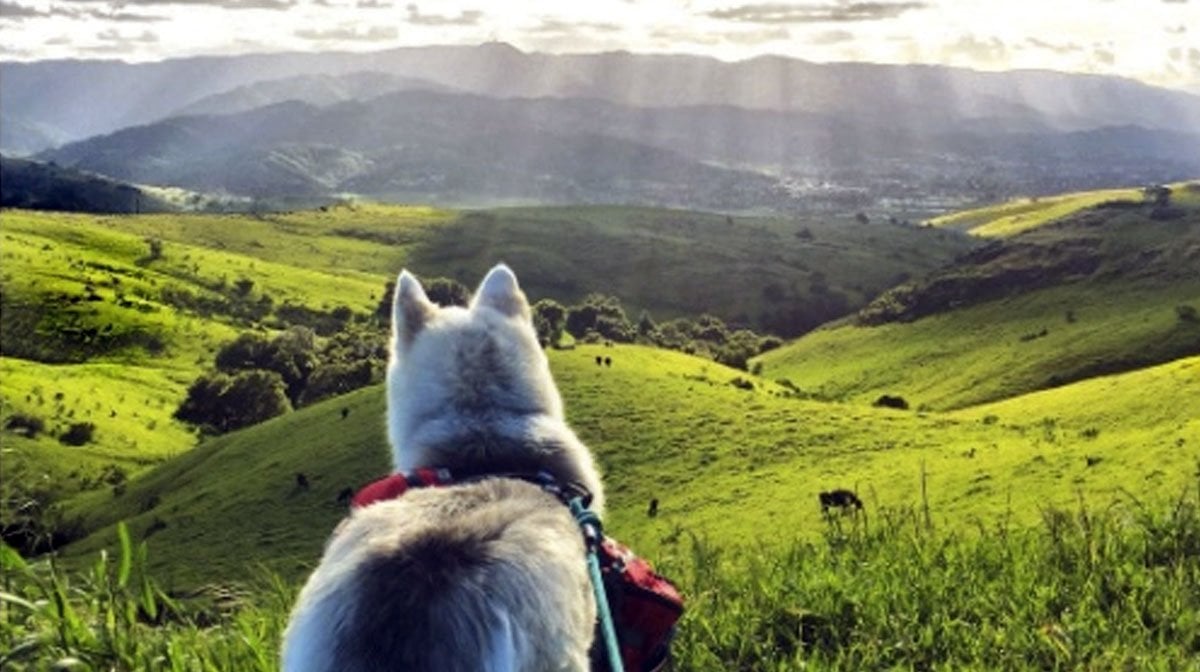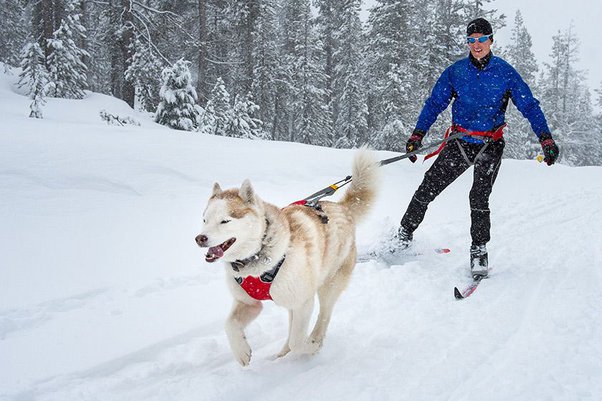Trekking with Your Four-Legged Friend: A Guide to Dog-Friendly Trails
Embarking on a trekking adventure with your furry companion is a rewarding experience that deepens the bond between you and your four-legged friend. In this guide, we'll explore the joys and challenges of trekking with your dog, offering insights into choosing dog-friendly trails, ensuring their safety, and maximising the enjoyment of your outdoor adventures together.
The Joy of Trekking with Your Dog:
Companionship and Bonding:

The companionship of a dog on the trail is unparalleled. Dogs are loyal and enthusiastic hiking partners, adding an extra layer of joy to your trekking experience. The shared moments of exploration strengthen the bond between you and your furry friend, creating lasting memories that go beyond the trail.
Physical and Mental Well-Being: Trekking is not only beneficial for humans but also for dogs. The physical exercise, fresh air, and exposure to new scents contribute to the overall well-being of your canine companion. A tired dog is a happy dog, and trekking provides an excellent outlet for their energy, promoting both physical and mental health.
Sense of Security: Dogs are natural guardians, and their presence can enhance your sense of security on the trail. Their acute senses and protective instincts can be reassuring, especially when exploring more secluded or unfamiliar areas. Many dogs also act as excellent trail companions, alerting you to potential hazards or wildlife encounters.
Choosing Dog-Friendly Trails:
 Understanding Trail Regulations: Before hitting the trail with your dog, it's crucial to understand and respect trail regulations. Some trails may have specific rules regarding dogs, such as leash requirements, restricted areas, or seasonal restrictions. Research the trail regulations in advance to ensure a smooth and enjoyable trek for both you and your furry friend.
Understanding Trail Regulations: Before hitting the trail with your dog, it's crucial to understand and respect trail regulations. Some trails may have specific rules regarding dogs, such as leash requirements, restricted areas, or seasonal restrictions. Research the trail regulations in advance to ensure a smooth and enjoyable trek for both you and your furry friend.
Checking Trail Difficulty: Not all trails are created equal, and the same goes for our canine companions. Consider your dog's size, age, and fitness level when choosing a trail. Opt for routes with terrain suitable for your dog's capabilities, avoiding trails with steep inclines, challenging obstacles, or difficult terrain that may pose risks to their safety.
Researching Trail Conditions: Stay informed about the current trail conditions, as factors like weather, seasonal changes, or maintenance can impact the suitability of a trail for dogs. Wet or slippery conditions may be challenging for some dogs, while extreme temperatures can affect their well-being. Choose trails with conditions that align with your dog's comfort and safety.
Ensuring Safety and Well-Being:

Health Check: Before embarking on a trek, ensure your dog is in good health for the journey. Schedule a visit to the veterinarian for a health check, ensuring your dog is up-to-date on vaccinations, free from injuries or illnesses, and adequately protected against ticks, fleas, and other potential hazards.
Proper Identification: Accidents happen, and dogs can sometimes get separated from their owners on the trail. Ensure your dog wears a secure collar with an ID tag containing your contact information. Consider getting your dog microchipped for an additional layer of identification, providing a higher chance of a reunion in case of separation.
Trail Etiquette:

Respecting trail etiquette is essential for a positive experience for both you and fellow trail enthusiasts. Keep your dog on a leash where required, and maintain control over their behaviour. Yield to other hikers, and be mindful of wildlife to prevent disturbances. Carry waste bags to clean up after your dog, leaving no trace behind.
Hydration and Nutrition: Dogs, like humans, need proper hydration and nutrition during treks. Carry sufficient water for both you and your dog, and offer regular breaks for hydration. Pack dog-friendly snacks or meals to keep their energy levels up. Be cautious about natural water sources, as not all may be safe for your dog to drink.
Weather Considerations:

Weather conditions can significantly impact your dog's well-being on the trail. In hot weather, be mindful of the temperature and terrain to prevent paw pad injuries or heat-related issues. In cold weather, consider a dog jacket to keep them warm. Always prioritise your dog's comfort and safety in varying weather conditions.
Maximising Enjoyment:
Training and Socialization:

A well-trained and socialised dog enhances the enjoyment of trekking adventures. Basic commands such as "sit," "stay," and "come" are valuable on the trail. Additionally, socialising your dog with other trail users, wildlife, and various environments can contribute to a positive and stress-free experience.
Pack Essentials: Carry a dog-friendly backpack with essentials for your canine companion. Pack water, collapsible bowls, snacks, a first aid kit, and any medications your dog may need. Additionally, bring a comfortable and secure leash, waste bags, and a mat or blanket for your dog to rest.
Choose Pet-Friendly Accommodations: If your trek involves overnight stays, research and choose pet-friendly accommodations. Many hotels, lodges, or campsites welcome dogs, but it's essential to confirm their pet policies in advance. Consider factors such as available space, nearby pet-friendly trails, and any additional fees or restrictions.
Gradual Introduction to Trekking: For dogs new to trekking, start with shorter and less challenging trails. Gradually introduce them to the hiking experience, allowing them to become familiar with the sights, sounds, and smells of the outdoors. Monitor their behaviour and adjust the difficulty of trails based on their comfort and confidence levels.
Regular Health Monitoring:
https://images.squarespace-cdn.com/content/v1/60183f25d7835f347b6bef56/d521756e-0ec8-4e39-822d-e416648ddfba/Family+Bryce.jpg
Throughout the trekking season, monitor your dog's health regularly. Check for any signs of discomfort, injury, or fatigue. Examine their paws for cuts or abrasions, and inspect for ticks or other external parasites. Regular health checks contribute to a positive and safe trekking experience for your furry companion.
Conclusion:

Trekking with your four-legged friend is a delightful journey that enhances the joy of exploration and strengthens the bond between you and your canine companion. By understanding trail regulations, choosing dog-friendly routes, ensuring safety, and maximising enjoyment, you can create memorable experiences for both you and your dog. Whether navigating wooded trails, summiting peaks, or exploring scenic landscapes, trekking with your dog transforms outdoor adventures into shared moments of joy, discovery, and companionship. So, leash up, pack your essentials, and embark on a trekking adventure with your loyal companion – where every trail becomes a shared exploration of the great outdoors.


